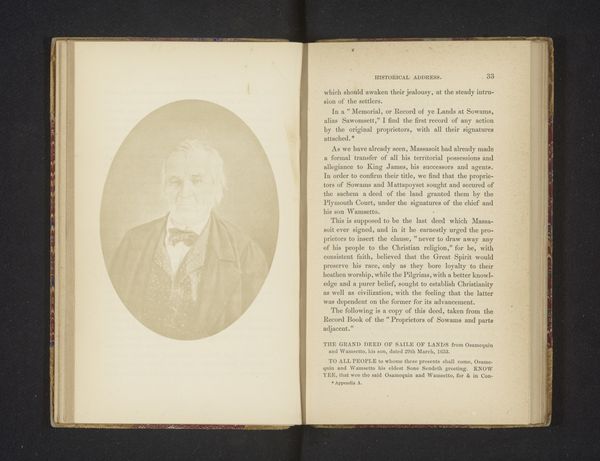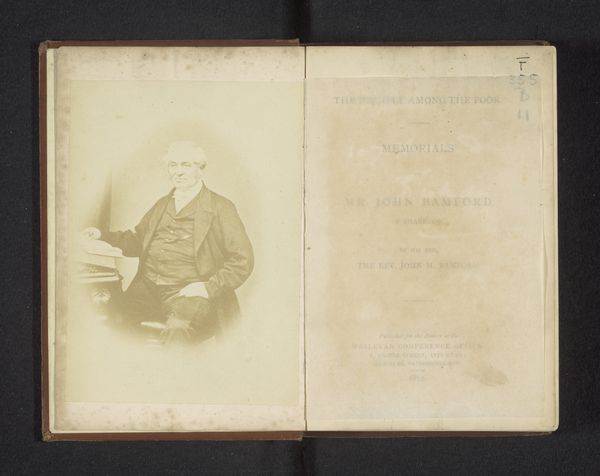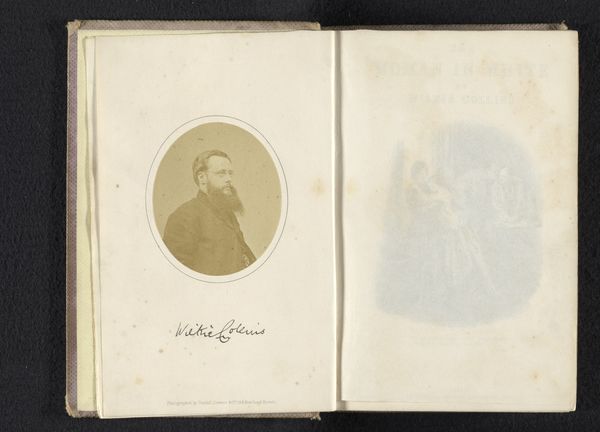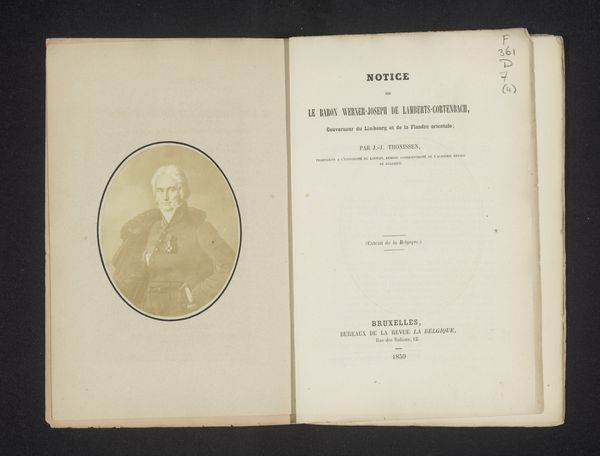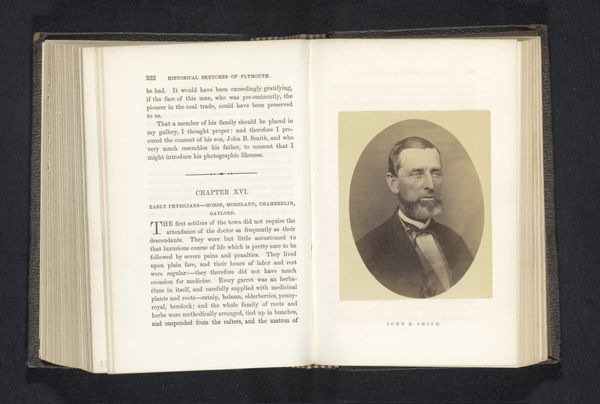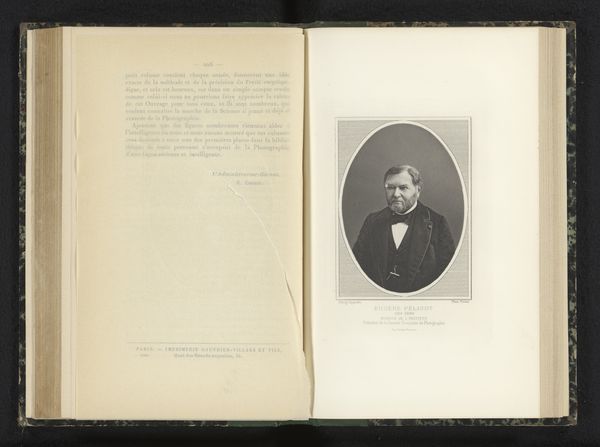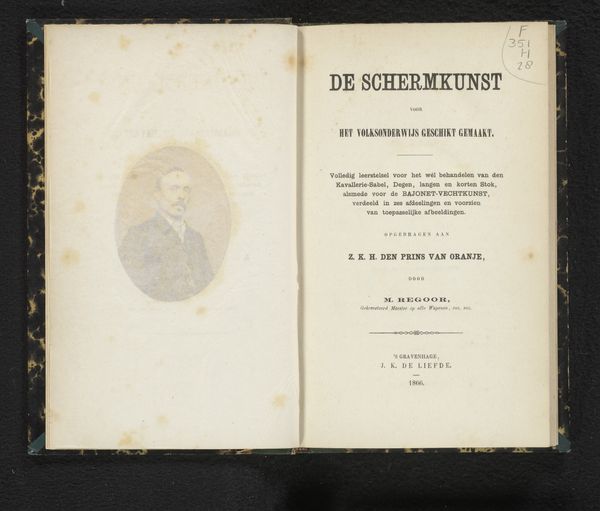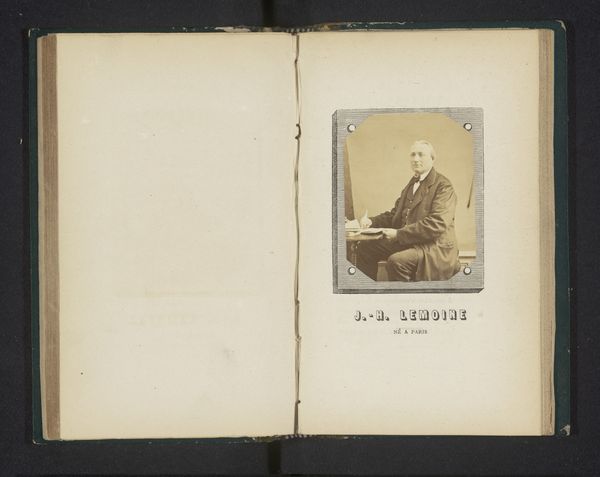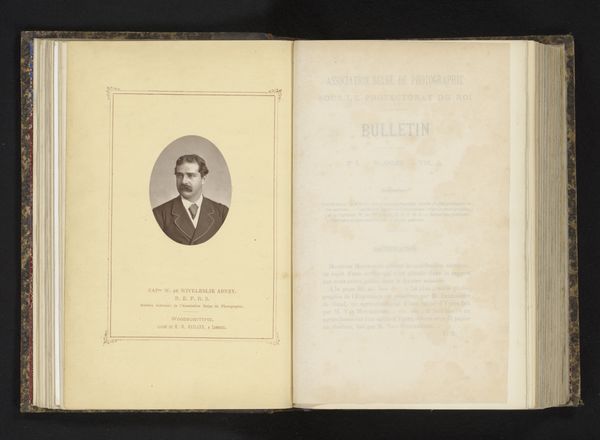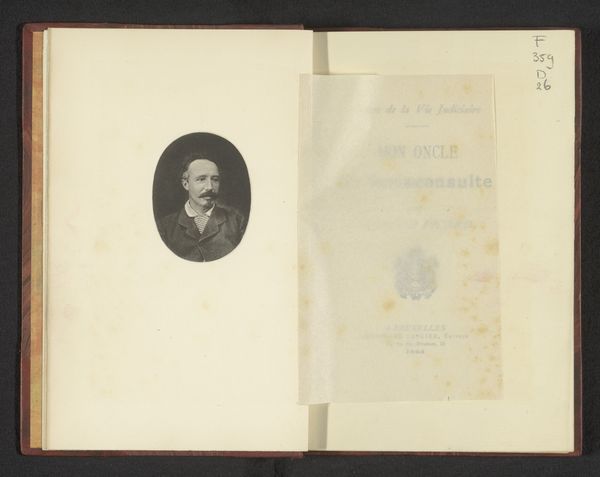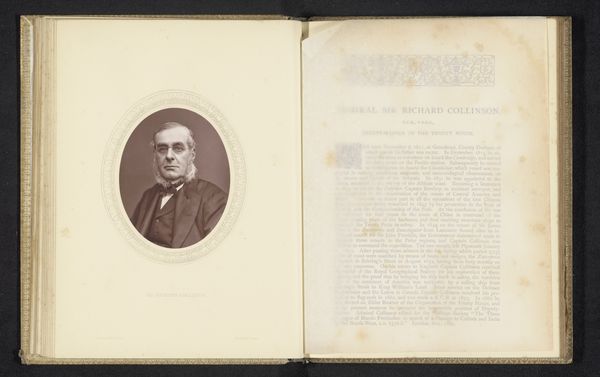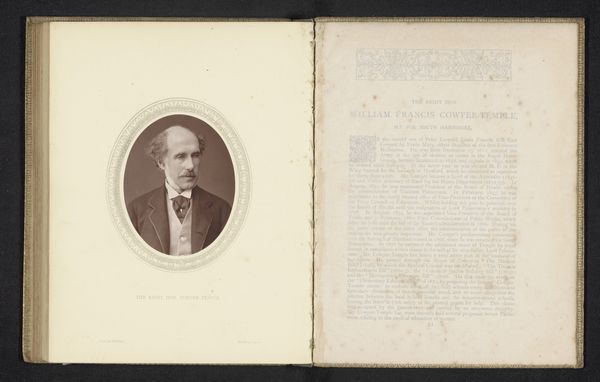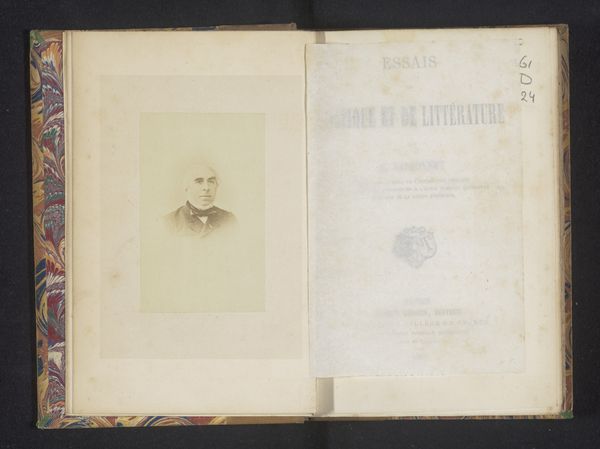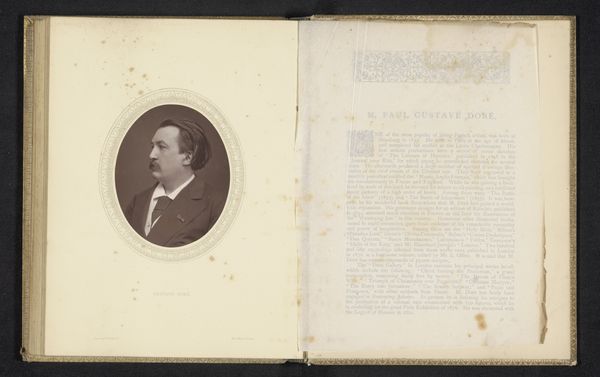
photography, albumen-print
#
portrait
#
photography
#
coloured pencil
#
watercolor
#
albumen-print
Dimensions: height 81 mm, width 61 mm
Copyright: Rijks Museum: Open Domain
Curator: Welcome. Today, we will examine a photographic portrait attributed to Jacob Hohmann, titled “Portret van Mijndert Martinus Regoor," made before 1866, an albumen print within the pages of a book. The tonal range of the albumen print provides for a nuanced image. Editor: The portrait evokes a rather stoic aura, wouldn't you say? Almost sepia-toned, contained within an oval vignette—it presents as very restrained. A document of the male gaze frozen in time, especially when paired with the text in Dutch on the opposing page, which creates a strong visual dialogue of its own. Curator: Yes, it is certainly contained, both physically within the book and stylistically, adhering to the conventions of portraiture of the period. Hohmann masterfully manipulates light and shadow to give depth and character to the subject's face. Notice the careful balance and symmetry. Editor: But is that balance inherently neutral, or does it further solidify societal norms? The very act of enshrining someone, especially a man, within a bound book—what does that signal about who is remembered and why? Also, the stark contrast in visibility – text printed boldly, versus a faded photographic likeness – highlights the relative permanence given to certain kinds of narratives. Curator: While your interpretation has merit, let us return to the visual language within the photograph. The formal composition is striking; his pose, expression—it adheres to a calculated presentation. This constructed formality also gives way to more accessible readings of psychology. Editor: Understood, yet can we divorce portraiture, even formally composed, from its historical backdrop? Who was Mijndert Martinus Regoor? How did power dynamics impact whose image got printed in albums like these? Whose histories do these types of restrained portrait albums reflect? Curator: By closely analyzing visual elements, we gain critical insights into social structures. These objects themselves provide access points, though only limited, into lost or obscured histories. Thank you for your thoughts. Editor: Precisely. These albums offer only partial truths. We must also critically consider the unspoken and unseen narratives. A richer dialogue that combines art and society. Thank you.
Comments
No comments
Be the first to comment and join the conversation on the ultimate creative platform.
